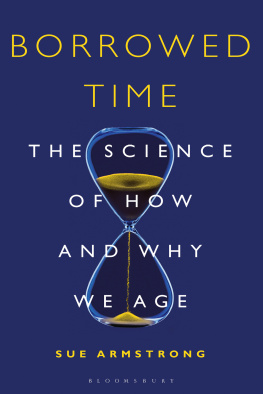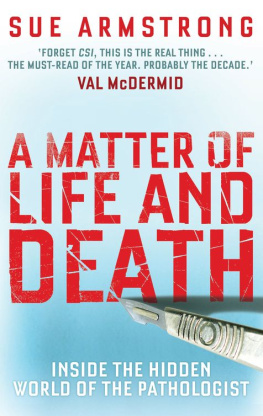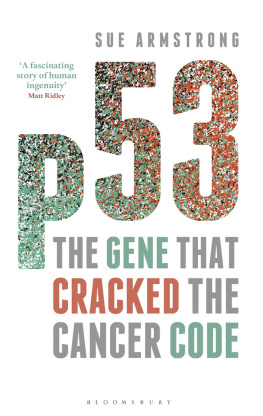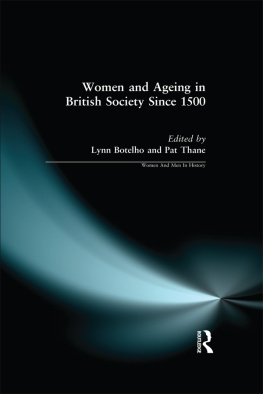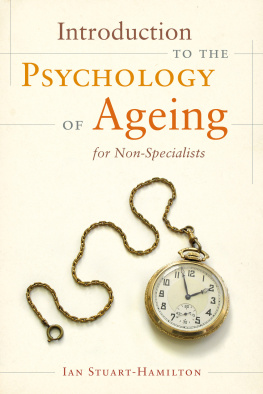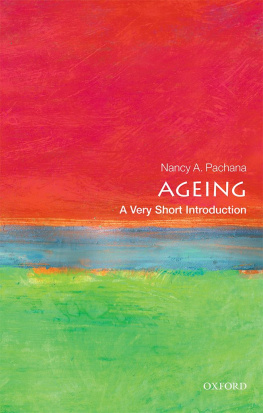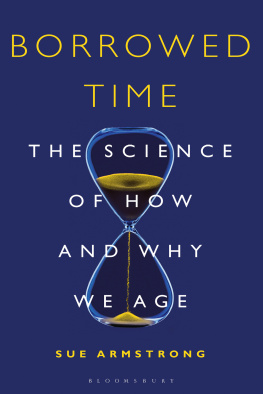
Also available in the Bloomsbury Sigma series:
P53: The Gene that Cracked the Cancer Code by Sue Armstrong
Spirals in Time by Helen Scales
A is for Arsenic by Kathryn Harkup
Breaking the Chains of Gravity by Amy Shira Teitel
Herding Hemingway's Cats by Kat Arney
Sorting the Beef from the Bull by Richard Evershed and Nicola Temple
Death on Earth by Jules Howard
The Tyrannosaur Chronicles by David Hone
Soccermatics by David Sumpter
Big Data by Timandra Harkness
Goldilocks and the Water Bears by Louisa Preston
Science and the City by Laurie Winkless
Bring Back the King by Helen Pilcher
Furry Logic by Matin Durrani and Liz Kalaugher
Built on Bones by Brenna Hassett
My European Family by Karin Bojs
4th Rock from the Sun by Nicky Jenner
Patient H69 by Vanessa Potter
Catching Breath by Kathryn Lougheed
PIG/PORK by Pa Spry-Marqus
The Planet Factory by Elizabeth Tasker
Wonders Beyond Numbers by Johnny Ball
Immune by Catherine Carver
I, Mammal by Liam Drew
Reinventing the Wheel by Bronwen and Francis Percival
Making the Monster by Kathryn Harkup
Best Before by Nicola Temple
Catching Stardust by Natalie Starkey
Seeds of Science by Mark Lynas
Outnumbered by David Sumpter
Eye of the Shoal by Helen Scales
Nodding Off by Alice Gregory
The Science of Sin by Jack Lewis
The Edge of Memory by Patrick Nunn
Turned On by Kate Devlin
For my sisters, Jane and Julie, who have shared this whole journey with me so far; and for Fred, who joined me halfway

Contents
In reporting science, I am always aware of the fact there are many, many people besides the ones I get to speak to who have been involved in the research I am covering. I should like to acknowledge these legions, and to apologise to those whose contributions I have been unable to credit directly, or whose important work I have not even touched upon in this brief journey across an enormous field. Your published work has nevertheless informed and enriched my narrative considerably, for which I am extremely grateful.
I wish to express my sincere thanks to all the people I did speak to for this book and whose stories and insights have given me a whole new perspective on the journey through life, and much to ponder. In particular I should like to thank Richard Faragher for his readiness always to answer my queries, and for his encouragement, enthusiasm and irreverence (which gave me a much needed laugh from time to time); my dear friend Suzanne Cherney, a peerless editor, for her careful reading of my manuscript and judicious comments (though I didn't heed her advice to drop one or two lovely Scottish words!); my publisher and editor at Bloomsbury, Jim Martin and Anna MacDiarmid, and my agent Donald Winchester of Watson Little Ltd, for their warm support and Liz Drewitt, my copy-editor at Bloomsbury, for her meticulous attention to detail and good advice.
Many scientists were particularly generous with their time, expertise and readiness to share their stories and enthusiasms from the front line of research. They are, in alphabetical order: Peter Adams, Julie Anderson, Steve Austad, Mark Bagley, Nir Barzilai, Mark Blaxter, Dale Bredesen, Judy Campisi, Mar Carmena, Irina Conboy, Mike Conboy, Lynne Cox, Caleb Finch, David Gems, John Hardy, Peter Hunt, Henri Jasper, Pankaj Kapahi, Brian Kennedy, Tom Kirkwood, Gordon Lithgow, Janet Lord, Janko Nikolich-Zugich, Linda Partridge, Emma Peat, Ram Rao, Wolf Reik, Martin Rossor and Thomas von Zglinicki. Kris Rebillot, Director of Communications at the Buck Institute, deserves a special mention also for her super-efficiency at organising my schedule during my visit to California, and her warm welcome.
Finally, I should like to express my special thanks to Mark Jones and his mother Pat Jones, and to John Jennings, whose personal stories of life in the shadows of serious illness are a poignant reminder of the relevance and urgency of the quest to understand the process of ageing and to find ways of preventing or treating its more distressing manifestations. Special thanks are due also to Dean Pomerleau, who has picked up and run with the science in his own everyday life, for sharing his experience of living on a very frugal diet.
We all live most of our lives on borrowed time, time that our stepmother nature never intended us to have.
Bryan Appleyard
Consider this: the Greenland shark can live for more than 400 years and appears to remain physically fit and fertile to the end. Or this: there is a type of jellyfish that swims the Mediterranean and the seas around Japan whose individuals are able to revert to the larval state and regrow to adulthood countless times. In other words, it is biologically immortal. So too the hydra, familiar to many of us from our first biology lessons looking at drops of pond water under a microscope: its body is composed entirely of immortal stem cells, and a whole new hydra can be regenerated from any little piece that gets chopped off. These last two creatures seem to possess the gift of eternal youth and vigour and never die of old age, as far as anyone knows for sure.
The question of exactly how and why organisms most especially us age has teased scientists for centuries, yet there is still no agreement. There are a myriad competing theories, from the built-in obsolescence of the disposable soma theory (which basically proposes that Nature doesn't have much use for us once we've passed our reproductive years and hasn't invested in good enough repair and maintenance systems to keep us going indefinitely) and the idea that ageing is wear and tear like the rusting of a car or the weathering of a canvas tent, to the ticking clock of the shortening telomeres that measure out the lifespan of our dividing cells, and the idea that ageing and death are genetically programmed and controlled. A growing number of respected scientists even believe that ageing is a disease, and it can be treated. Some go so far as to suggest ageing can be cured, so that we too could potentially live forever.
I found this last idea the quest for immortal life so exasperatingly narcissistic that I contemplated giving up on this book near the start. But since I had already booked a flight to California (where else?) and made plans to meet a bunch of scientists when the big doubts struck, I decided to go anyway, enjoy the trip and make a decision when I had talked to some leading people in ageing research, or gerontology as it's called. One of my first interviewees, when asked how he felt about certain colleagues who claim we are on the brink of being able to extend the human lifespan to 150, 500, 1,000 years and more, answered, I'd say what are they smoking? As he headed off to another meeting at the end of our interview, he quipped, Send me a postcard when you get to those promised shores!
A good laugh helped restore my faith in my project and I decided happily to carry on. Over the course of my research I have met some fascinating people, engaged in enthralling debate, and been forced to confront my own prejudices, for I, like most of us I suspect, have taken ageing for granted as an inevitable process to be accepted and endured, if not welcomed. But the fact is that the biggest single risk factor for a host of conditions from stiffening joints, thinning bones and waning energy to heart failure, cancer, stroke, dementia and the steady loss of hearing and eyesight is old age.

